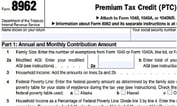The backdoor Roth IRA has long functioned as a workaround for higher income clients who wish to contribute to a Roth, but are technically barred by the income restrictions that apply to these accounts.
While the strategy was not uncommon, technically its legality was only recently confirmed by the Conference Committee report on the 2017 Tax Cuts and Jobs Act. This means that clients who may have previously been on the fence about using this technique to create a tax-free income stream during retirement may now be much more interested in the strategy — especially considering the currently reduced tax rates applicable from 2018-2025.
Before a client rushes to fund a backdoor Roth IRA, however, it’s important that he or she understand that even this so-called “backdoor” strategy is subject to IRS rules and restrictions that must be followed to avoid turning a valuable retirement planning strategy into a tax setback.
The Backdoor Roth Strategy
As the name suggests, the backdoor Roth IRA strategy essentially provides an alternate route to funding a Roth IRA for clients whose income exceeds the annual limits for contributing directly to a Roth. In 2018, the ability to make contributions to a Roth IRA begins to phase out for joint filers with income over $189,000 ($120,000 for single clients). Roth contributions are completely blocked for married clients who earn over $199,000 and single clients who earn over $135,000.
Fortunately, these higher income clients are still allowed to contribute to a traditional IRA (although those contributions might not be tax-deductible because of the income limits that apply to deductible IRA contributions). To use the backdoor Roth strategy, the client simply opens and funds a traditional IRA and then converts those funds to a Roth IRA (paying income tax on the converted amounts at his or her ordinary income tax rate). The client, of course, will want to do the math to ensure that the conversion won’t push him or her into a higher tax bracket for the year.
The process can then be repeated over time in order to grow the account value (remembering that the client can convert more than the $5,500 annual IRA contribution limit each year). However, while this strategy is available to higher income clients, it is not available to every higher income client.









 April 16, 2018 at 12:52 PM
April 16, 2018 at 12:52 PM











 Robert Bloink’s insurance practice incorporates sophisticated wealth transfer techniques, as well as counseling institutions in the context of their insurance portfolios and other mortality-based exposures. Bloink, a professor at Texas A&M University School of Law, is working with William Byrnes, Associate Dean of Texas A&M University School of Law, on development of executive programs for insurance underwriters, wealth managers and financial planners. Previously, Bloink served as senior attorney in the IRS Office of Chief Counsel, Large and Mid-Sized Business Division.
Robert Bloink’s insurance practice incorporates sophisticated wealth transfer techniques, as well as counseling institutions in the context of their insurance portfolios and other mortality-based exposures. Bloink, a professor at Texas A&M University School of Law, is working with William Byrnes, Associate Dean of Texas A&M University School of Law, on development of executive programs for insurance underwriters, wealth managers and financial planners. Previously, Bloink served as senior attorney in the IRS Office of Chief Counsel, Large and Mid-Sized Business Division. William Byrnes is the leader of National Underwriter’s Financial Advisory Publications, having been appointed in 2010. He is a professor and an associate dean of
William Byrnes is the leader of National Underwriter’s Financial Advisory Publications, having been appointed in 2010. He is a professor and an associate dean of